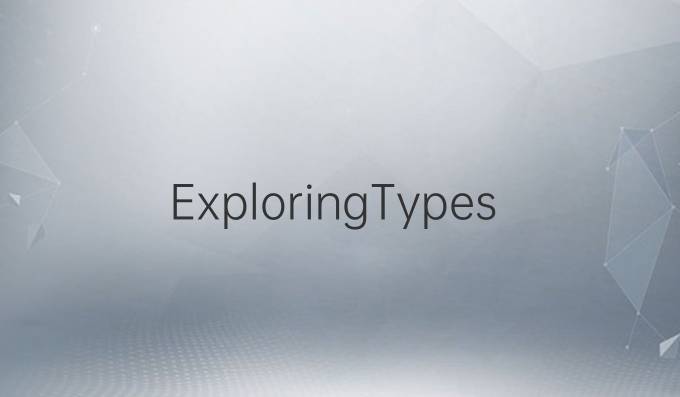
4007-702-802
Follow us on:



The source of the article:ManLang Publishing date:2024-07-20 Shared by:

Abstra: Content marketing is a pivotal strategy for modern businesses aiming to engage and convert audiences. "Exploring Types of Content Marketing: A Comprehensive Guide" dives deep into this multifaceted approach, categorizing it into four distin types: written content, visual content, interaive content, and video content. Each type offers unique advantages and challenges, catering to diverse audience preferences and marketing goals. This guide serves as a comprehensive resource, detailing strategies, best praices, and case studies to illustrate effeive implementation. By understanding these content types and their applications, businesses can craft compelling narratives that resonate with their target demographics, driving brand awareness and fostering customer loyalty.
Written content remains a cornerstone of content marketing, encompassing blogs, articles, eBooks, and whitepapers. Its strength lies in conveying detailed information, establishing thought leadership, and enhancing SEO efforts through strategic keyword integration. Blogs, for instance, are versatile tools for engaging audiences on industry trends and company updates, while eBooks provide indepth knowledge to nurture leads through the sales funnel.

Moreover, written content fosters trust and credibility by delivering authoritative insights and solutions to audience queries. Case in point, a software company's blog discussing troubleshooting tips not only educates users but also positions the brand as a knowledgeable industry leader, driving organic traffic and conversions.
Furthermore, its adaptability across platforms—from social media shares to email newsletters—ensures widespread distribution, maximizing reach and engagement among diverse audience segments.
Visual content leverages images, infographics, and memes to communicate messages swiftly and memorably. This type of content capitalizes on the brain's preference for visual information, facilitating quicker comprehension and higher retention rates. For instance, an infographic illustrating statistical data can succinly convey complex insights that resonate with visual learners and busy professionals.
Additionally, platforms like Instagram and Pinterest thrive on visual content, offering brands opportunities to showcase produs and services creatively. Visual storytelling through videos and animated GIFs not only captivates audiences but also strengthens brand identity by evoking emotions and associations.
Moreover, the shareability of visual content enhances virality potential, fostering organic growth and community engagement across digital platforms.
Interaive content encourages audience participation and engagement, transforming passive viewers into aive participants. Examples include quizzes, polls, calculators, and interaive infographics. By involving users in content consumption, brands can personalize experiences, gather valuable data, and tailor recommendations based on individual preferences.
Furthermore, interaive content drives longer dwell times and increased dwell depth, metrics that indicate audience immersion and interest. For instance, a financial planning company's retirement savings calculator not only educates users but also positions the brand as a trusted advisor, fostering deeper conneions and brand loyalty.
Additionally, interaive content enhances social sharing potential, as users are more likely to share personalized results or quiz outcomes with their networks, amplifying brand reach and visibility organically.
Video content has emerged as a dominant force in digital marketing, offering dynamic storytelling capabilities and engaging audiences across platforms like YouTube, TikTok, and LinkedIn. From produ demonstrations to behindthescenes glimpses, videos foster emotional conneions and authenticity, humanizing brands and strengthening consumer trust.
Moreover, live streaming and webinars enable realtime interaions with audiences, facilitating Q&A sessions and demonstrations that enhance engagement and credibility. For instance, a fitness brand's live workout sessions not only promote produs but also build a community around health and wellness, driving sustained viewer engagement.
Furthermore, the popularity of video content on social media platforms underscores its role in driving discoverability and virality, as users aively seek and share engaging video content that resonates with their interests and aspirations.
Summary: In conclusion, "Exploring Types of Content Marketing: A Comprehensive Guide" underscores the versatility and impa of various content types in achieving marketing objeives. By strategically integrating written, visual, interaive, and video content, businesses can enhance brand visibility, engage target audiences, and foster longterm customer relationships. Understanding the strengths and applications of each content type empowers marketers to craft compelling narratives that resonate with diverse audience preferences, ultimately driving business growth in the digital age.
Key words: Typesof TypesofContent TypesofContentMarketing
What you might be interested in
Understanding the Pricing Models for SEO Keyword Optimization: A Comprehensive Guide to Costs and Va
2025-03-05Optimizing Keywords: Strategies for Enhanced Search Visibility and Improved Content Performance
2025-03-05Enhancing Digital Visibility: Innovative SEM Strategies for Optimizing Business Growth and Online Pr
2025-03-05What you might also be interested in
Unpacking Content Marketing: Strategies and Insights for Effeive Brand Storytelling
2024-12-17Effeive Strategies for SEO Keyword Promotion: Boost Your Online Visibility and Drive Targeted Traffi
2025-02-28Digital Growth Solutions: Empowering Brands and Boosting Online Presence
2024-03-07Exploring the Future of Content Marketing: Key Trends Shaping Engagement and Strategy in 2025 and Be
2025-02-14The Power of Content Marketing: Maximizing Impa and Engagement
2024-03-19Mastering Content Marketing: Strategies to Engage Your Audience and Drive Results
2025-02-13Empowerment Hub: Elevating Businesses with Hosting and Promotion Solutions
2024-05-14